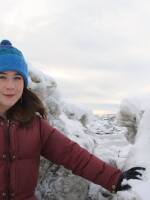A new walrus haulout site between Ugashik and Egegik is more accessible to tourists than traditional Bristol Bay haulout sites. Pilots and lodges in the area are both trying to utilize and protect this opportunity.
On a trip to southwest Alaska, some tourists are willing to pay hefty prices for the chance to view large animals in pristine, natural habitat. For years, lodges and air taxis have flown visitors to Round and Hagemeister Islands and Capes Peirce, Newenham, and Seniavin to see thousands of walruses resting on beaches. Last April, walruses migrating through Bristol Bay did something unusual.
“For the first time in recorded history and memory they showed up at Cape Greig,” says Dan Michel, owner of the Crystal Creek lodge in King Salmon. “They’ve been using places like Cape Seniavin and Cape Newenham as transition zones between their migrations from the Artic down to Bristol Bay for centuries. Last year, mysteriously, about 2500 of them showed up at Cape Greig.”
This year they are back again. Michel used to fly his guests to Cape Seniavin to get a look a walruses. For the past two years, however, he has taken them to Cape Greig instead because it is closer to town.
Even as he is excited that walrus viewing is more accessible, he urges caution.
“It’s an incredible opportunity to see something that’s very hard to find anywhere in the natural world. This is something that’s very easily accessible, but they’re extremely sensitive to aircraft noise. Airplanes have flown overhead a little too close, and then they all raise up in alarm and all start stampeding toward the water. We don’t want to do that. We want their experience here to be as peaceful as possible so that they will continue to return to Cape Greig,” says Michel.
That’s a sentiment that Trygg Air pilot and founder, Chris Klosterman, echoes. He says interest in walrus viewing is increasing as more people hear about trips like the ones he offers.
“We take off from King Salmon and typically land right on the beach about a half mile away from them. We walk down the beach. There’s a big cut bank. You get on top of it and look down on them. When the weather’s nice it’s pretty fantastic, sitting there staring at the ocean, looking at those weird creatures crawling in and out. There’s a lot of ivory sticking up in the air and a lot of grunting and walrus smells,” says Klosterman.
In addition to wildlife viewing excursions out of King Salmon, he even offers a day trip from Anchorage. This month at least six groups will go on that trip, each person paying $1200 to $1500 to see these Cape Greig walruses.

From a preservation standpoint, however, Klosterman is conflicted. Like Michel, he has also witnessed pilots flying too close to the walruses and causing alarm.
“I like doing this trip. I don’t want to make it my sole source of business. It’s one of those Catch-22s. You want to be able to take people down there to show it to them, but you want to try to preserve it to keep it this special thing,” Klosterman explains.
Last June, the U.S. Fish and Wildlife Service developed guidelines for people viewing or traveling near the Cape Greig haulout. They advise that pilots of single engine aircrafts avoid flying within one-half mile of hauled out walruses. Boats under 50 feet in length should stay half of a nautical mile away. Bigger aircrafts and marine vessels should give the walruses even more room.
Walruses are protected by the Marine Mammal Protection Act, which prohibits harassing, hunting, capturing, or killing a marine mammal.
Contact the author at avery@kdlg.org or 907-842-2200.



